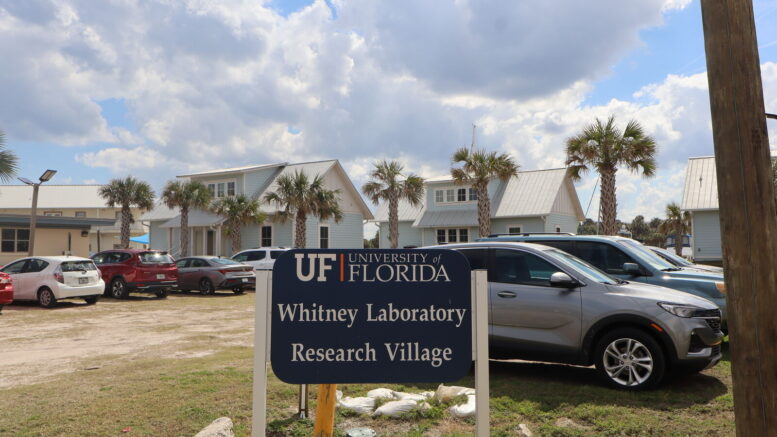By Emily Braunstein
Living in Florida means coexisting with marine life. But the University of Florida’s Whitney laboratory for Marine Bioscience is doing more than coexisting—they are innovating.
Before the Whitney Lab in Marineland, Florida, there was no solutions to the sick or displaced sea creatures in Northeast Florida. Since opening in 2013, the lab has provided rehabilitation and research of marine life in the community.
Located directly on the Atlantic Ocean and the Matanzas River, there is no shortage of fresh running seawater that provides the right chemistry and organisms for the marine life.
“There’s a whole lot of work here that you can’t do anywhere else,” said Whitney Lab Director Dr. Veronica Hinman.
The lab also focuses on coastal, fishery, seagrove, and mangrove restoration by putting clams back into the Matanzas River, which regenerates the fisheries and improves water quality. There is also an area of the lab that uses marine organisms for research in regeneration, cancer, neural, and stem cell biologies.
“It seems small, you don’t even notice it from the road, but there is a lot going on here,” said Hinman.
The Whitney Lab also has a Sea Turtle Hospital, a facility that has rehabilitated and released over 93 sea turtles in almost 10 years. They specialize in the research and treatment of fibropapilloma, a cancer extremely common in sea turtles.
“It was a small group of people with a common goal, working hard to have this huge impact and to create something bigger than ourselves,” said Sea Turtle Program Manager Cat Eastman. “That, to me, is what gets me out of bed each day to come into work.”
A group of four scientists noticed the lack of rehabilitation for marine life in the area, and went to UF to get the funding for the solution.
“I remind myself that it was just a couple of us and after a lot of blood, sweat, and tears, we worked together and we made something happen,” Eastman said. “It really does take one person.”
The sea turtle hospital’s work provides biomedical research, because research on cancers in sea turtles can give information about cancers in humans or other animals. These findings are also shared with other marine rehab facilities and vets – the hospital’s research reaches far beyond just their facility.
The Whitney Lab emphasizes community engagement and education to spread its impact beyond just the lab.
“One of our ultimate goals is that if people engage with this stuff and start to see it and think it’s cool, they are going to care more about it,” said Amy Biedenbach, MS, Education Program Manager.
Over 4,000 elementary and middle school students visited the facility last year. There are seminars, adult events, volunteer opportunities, graduate student programs, and post-doctorate programs. There are 40 volunteers in the education facility and 25 at the sea turtle hospital.
“Now, those volunteers are science advocates in their communities, and they tell a friend who tells a friend,” Biedenbach said. “This has helped us get a lot of support at the lab, just by creating opportunities for the adults in our community to get involved.”
The more the Northeast Florida community is involved, the more people can become advocates for the preservation of marine life. The impact of the lab’s research and mission can make a significant and long-lasting impact.
“We want to inspire the community to make good choices for us but also for the wildlife around us,” Eastman said. “We can all share it in a way that wants people to make a change. Spread the word, tell people a story.”
Protecting the environment is most effectively done when people are inspired to make a change, and the Whitney Lab is doing just that by showing the community the marine life they are saving.
“It doesn’t matter how brilliant your findings are if someone doesn’t carry them on,” said Hinman. “I think the lasting impact is about training the next generation of scientists and engaging the general public so people can understand the environment they are living in and what can be done [to help it].”




Be the first to comment on "Saving the Marine Life of Northeast Florida"